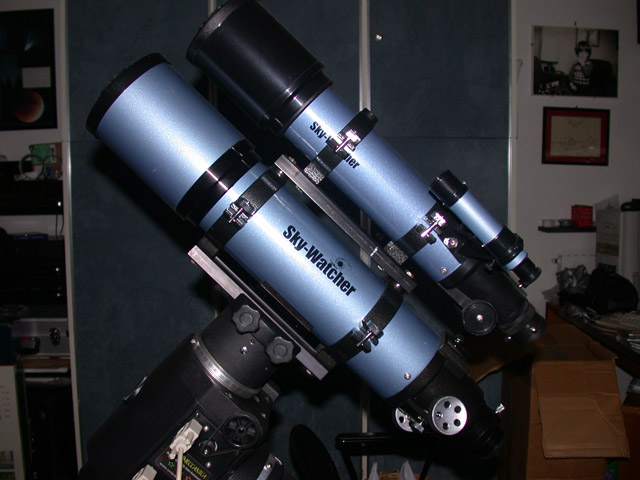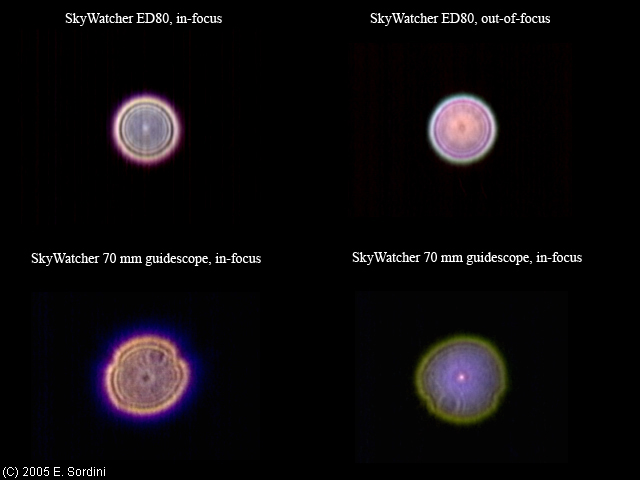This post is also available in: Italiano (Italian)

It’s been quite a while (actually at least fifteen years 😉 ) since chinese-made products hit the amateur astronomy market. At the beginning, only small accessories such as adapter rings, eyepieces, prisms and finders were made in the Far East by Japanese, European and American companies to cut down on costs. Then came low-end complete telescopes such as small department-store refractors and reflectors, up to 150 mm in aperture; anyway, medium- and high-end OTAs and mounts were still largely dominated by the same European, Japanese and American companies.
However, after the year 2000 this picture changed significantly: chinese brands (namely Synta) started cranking out bigger telescopes and mounts. Although their quality has greatly improved over the years, it is still far behind most renowned brands, but their price/performance ratio is very good and allows newbies (or, more generally, everybody being on a budget) to start doing astronomy without shelling out a fortune.
A couple of years ago, Synta started producing new semiapo ED refractors, which are said to be optically in the same league as those from several “traditional” manufacturers (Vixen, TeleVue, etc.) but for only a fraction of their cost. Being in search of a small portable refractor for deep-sky work and “grab-and-go” last-minute trips, a few months ago the reasonable price tag and positive reviews convinced me to purchase a Skywatcher ED80 unit.
This short article is not meant to be a thorough review, as you’ll find plenty of them both on the ‘Net and on paper astronomy magazines. Instead, I hereby intend to share my first impressions with you. I haven’t had enough time yet to take it on a full observing session.
Up close & personal
I’ve seen instruments lighter than this one in the same aperture class: the Borg or William Optics units, or even the Pentax 75 (which is 5 mm smaller, though) are much more compact, probably owing it to the retractable dewcap. The ED80 tube is painted with the classical blue Skywatcher finish. After playing around with it for a few minutes, two major flaws can be clearly identified:
- The crappy focuser, which is so loose it can’t even hold a 1.25″ right-angle prism + eyepiece without sliding out. This clearly denotes awfully poor machining.
- The lens cell that can’t be collimated.
There are plenty of ways and articles and on how to solve the infamous focuser problem: essentially, it all boils down to lapping the focuser drawtube flat part. I did this as well, and as a result it is much tighter now. Of course, the alternative (but more expensive) solution is to replace the whole focuser assembly with a better unit available from a few third-party vendors (Baader, MoonLite, William Optics, etc.)
The cell collimation problems has been solved by some fellow amateur astronomers. The three screws that hold the focuser cell to the scope OTA do have some play: therefore, they can be loosened to allow for fine visual tuning. Once perfect collimation has been achieved, some plastic shims can be added as needed between the focuser cell and the OTA tube, so as to keep collimation permament by re-tightening the screws.
Testing it
Although I haven’t done any long-exposure imaging with my ED80, I took advantage of the first clear night to perform a star test, whose actual image is for some reason not easily available on the Internet. The 70/500 guidescope was also star tested as a comparison. All images were taken by aligning and stacking the best 200 frames from a 400-frame AVI acquired with a ToUcam Pro webcam.

From the above picture, we can easily derive the following information:
- The ED80’s star test looks quite good. Its diffraction rings (especially the outer ones) are clearly visible, and chromatic aberration is very moderate.
- The SW 70/500, on the contrary, clearly shows pinched optics and plenty of spherical and chromatic aberrations. In a few words, it plainly stinks 😉
I must say these tests clearly show the ED80 very good optical quality, at least for its price tag. I am not particularly worried about the guidescope’s poor optical quality, since it is perfectly up to the task it was bought for (guess what… guiding, perhaps? :-). Stay tuned, since as soon as I can put the ED80 through its paces, I will post the results on this website.
Resources
Here are a few resources/links that might come in handy:
- Orion_ED Yahoo user group: THE reference user group for all Orion ED refractors and their kins, including models sold under the Skywatcher brand name.
- Skywatcher telescopes official website.
- MoonLite focusers: source of premium quality (and price) focusers.
- William Optics: producers of high-quality refractors and accessories.
- Michael A. Siniscalchi’s ED80 focuser drawtube modification
- Joe Cartolano’s ED80 focuser modification
